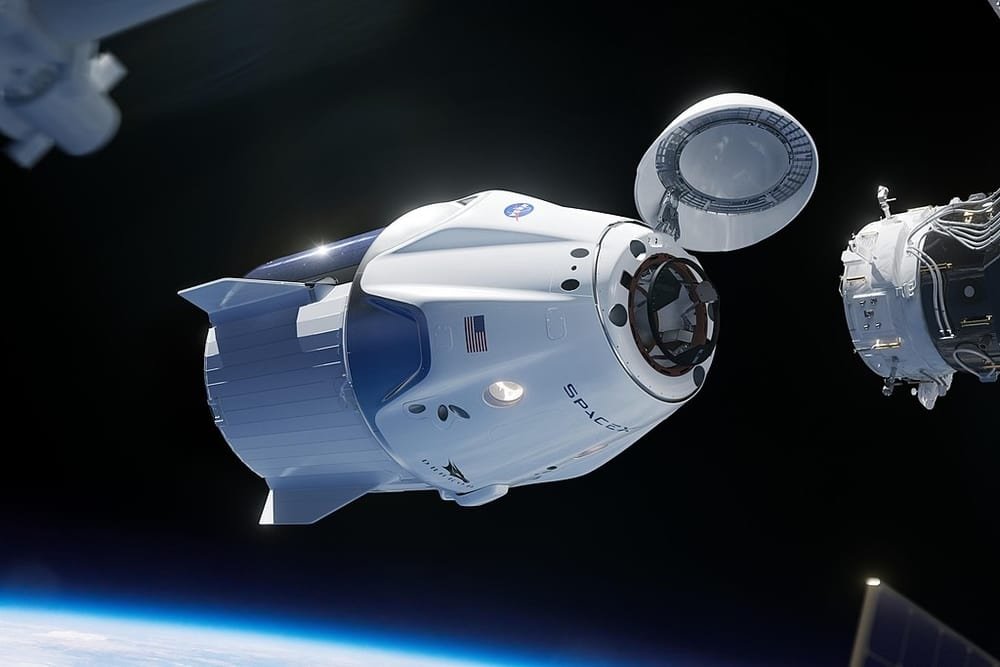Crew Dragon
The Crew Dragon (Dragon 2) is a space vehicle developed by the company SpaceX on behalf of the American space agency, NASA, which since 2020 has been taking over the crews of the International Space Station. The spacecraft is capable of carrying a crew of four astronauts in low orbit.
Dragon 2 is a class of reusable spacecraft.
Crew Dragon is with Boeing CST-100 one of the two vessels developed in response to the call for tenders of the CCDeV program launched in 2010. The objective of the latter was to take over the missions provided temporarily by the Russian Soyuz vessels at the following the withdrawal of the American space shuttle in 2011.
Read also: The order of the planets closest to the sun
ts construction cost $ 150 billion.

The return of the Crew Dragon 1 crew postponed to May 1, 2021
NASA and Space X have announced the postponement of the return to Earth of the Crew Dragon 1 capsule and its four astronauts, on mission on the ISS since November 2020.
After a little over 5 months aboard the International Space Station (ISS), the crew of the Crew Dragon 1 spacecraft will return to Earth on May 1, 2021, at 5:36 p.m. French time. A return initially scheduled for April 28, 2021, but postponed by three days due to too strong winds announced in the area of the landing of the capsule. After the departure of Americans Michael Hopkins, Victor J. Glover, Shannon Walker and Japanese Soichi Noguchi, the ISS will have only seven members instead of the eleven present since the arrival of the Crew Dragon 2 capsule on April 24, 2021.
An overview of Crew Dragon – It’s a capsule design
In May 2014, Musk unveiled the seven-seat Crew Dragon concept during an event at SpaceX’s headquarters in Hawthorne, California.
It’s a capsule design – like the Apollo command modules that carried astronauts to the Moon.
From launch up until shortly before re-entry, the capsule is attached to a section called the trunk, which has solar panels, heat-removal radiators, space for cargo, and fins to provide stability during emergency aborts. Together, the capsule and trunk stand around 8.1m (26.7ft) tall, with a diameter of 4m (13ft).
The Crew Dragon is equipped with 16 Draco thrusters that manoeuvre the vehicle in orbit. Each Draco is capable of producing 90 pounds of force in the vacuum of space.
If anything goes wrong during lift-off, the capsule has a launch escape system (LES) consisting of eight SuperDraco engines that each produce 16,000 pounds of force. The LES quickly separates Crew Dragon from its rocket.
Read also: Planets by Size | Classification of Planets from Biggest to Smallest
Development and procurement
SpaceX founder and chief developer Elon Musk presented the Dragon 2 on May 29, 2014 using a mock-up. In September 2014, chose NASA , the Dragon 2 next to the CST-100 Starliner by Boeing as part of its Commercial Crew Development Program (CCDev; development program for commercial manned spaceflight) for implementation. The contract is valued at $ 2.6 billion and included the construction of the spacecraft, several unmanned test flights and a demonstration flight with NASA astronauts. After successful testing and certification by NASA, six manned missions were commissioned. The first test flights are financed in the Commercial Crew Transportation Capability (CCtCap) phase of the CCDev program.
As part of Commercial Resupply Services 2 , NASA also commissioned six cargo flights with the Cargo Dragon (CRS-21 to CRS-26).
In February 2017, SpaceX also announced that it had received an order to transport space tourists around the moon in a Dragon 2. However, the flight was later postponed and rescheduled to the Starship.
Technology and special features
The spaceship consists of the manned capsule and a service module called a trunk. The capsule has the heat shield and is able to return to earth. All main systems, as well as the maneuver thrusters, are integrated into the capsule. The trunk has a much simpler structure than other spaceships such as the Soyuz or Apollo . He wears, among other things. aerodynamic stabilization surfaces for the aborted take-off, the solar cells and can accommodate additional charge that does not require atmospheric conditions. The trunk is separated before re-entry and then burns up.
Cockpit and operator guidance
The commander and pilot can control the capsule via a touchscreen control panel, which contains two screens for data output and a control panel as well as a joystick for flight control and, in addition, as a backup for operating vital and safety-relevant control variables, buttons and rotary controls.
Read also: Planet Distance to Sun | How Far Are The Planets From The Sun?
Docking ability
If the Dragon 1 still needs its gripper arm for docking with the ISS, the Dragon 2 docks to the ISS automatically or, if necessary, controlled by the pilot. Dragon 2 uses a coupling adapter that is compatible with the International Docking System Standard (IDSS).
Heat shield
The heat shield on the underside of the capsule, which prevents the spaceship from burning up when it re- enters the atmosphere , consists of a further development of the PICA-X heat shield (Phenolic Impregnated Carbon Ablator), which SpaceX developed for the Dragon 1 and manufactures in-house.
Landing procedures and emergency rescue
The spaceship should be constructed in such a way that it would be possible “to land anywhere in the country with the precision of a helicopter”. To this end, eight so-called superdraco integrated -Triebwerke into the capsule. These eight engines should also function as a launch rescue system during manned missions and thus replace the classic rescue rocket. A parachute that is still present should only be opened in an emergency. The spaceship should land on four support legs, which – like the undercarriage of the space shuttle – are extended through openings in the heat shield. The SuperDracos should take over the braking shortly before touchdown.
However, these plans to land on land were canceled. Instead, the Dragon capsule is braked with parachutes and then watered down. The engines remained on board the Crew Dragon as a launch rescue system and are not used for braking; at the Cargo Dragon they are not available. The support feet were omitted in both variants.
Reusability
With the Cargo Dragon 2 (Crew Dragon), up to five flights per space capsule are planned – two more than with the Dragon 1, which was used a maximum of three times. When ISS Shuttle Flight SpaceX crew-2 , launched on 23 April 2021 is the first time used a crew-Dragon capsule. It was already used in the SpX-DM2 mission in 2020.
Sources: PinterPandai, Space X, BBC
Photo credit: Wikimedia Commons
Photo explanations: in this illustration, a SpaceX Crew Dragon spacecraft approaches the International Space Station for docking. NASA is partnering with Boeing and SpaceX to build a new generation of human-rated spacecraft capable of taking astronauts to the station and expanding research opportunities in orbit. SpaceX’s upcoming Demo-1 flight test is part of NASA’s Commercial Crew Transportation Capability contract with the goal of returning human spaceflight launch capabilities to the United States.



